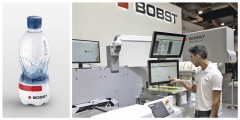Bobst announces product support to converters for shrink sleeves
Bobst has revealed that it is taking steps to help converters enter new markets with shrink sleeve labels production.
The company quoted a Smithers report to emphasis the segment’s growth. It said that the global market share of all types of sleeve labels will grow annually by 6.9% in the period 2019–24, making it the highest growth type among all label formats.
In a press note shared with PrintWeek, the company said, there are several reasons behind the steep growth of shrink sleeve labels. “The main market driver is the high marketing impact. Consumers like variety, both in the packaging and in the packaged products, and for brand owners, sleeve labels is an effective way to diversify products and flavours through their very distinctive shelf appeal.”
The labels are also highly adaptable and will fit differently shaped containers, irrespective of the material they are made of, be it plastic, glass or metal. The premium shelf appeal of shrink sleeve labels enables brand owners to engage with consumers in new ways and also offers the opportunity to revitalise existing products.
Shrink sleeves are full-colour labels that cover the entire surface of the container, offering 360-degree graphics for branding and messaging. They are printed on special filmic substrates that with the application of heat shrink to wrap around the shape of the container. “End-use application is found predominantly in the food and beverages, but have spread throughout the pharmaceutical and nutraceutical, toiletries, health and beauty, and industrial and household cleaning segments,” the statement said.
The Bobst statement added that the preferred method of printing depends on the requirements of the label. “They range from gravure for very long runs, to flexographic and digital printing for short to medium runs. “Bobst has solutions that meet the demand for all run lengths, including analogue printing methods – gravure, CI and inline flexo – as well as digital technology.”






